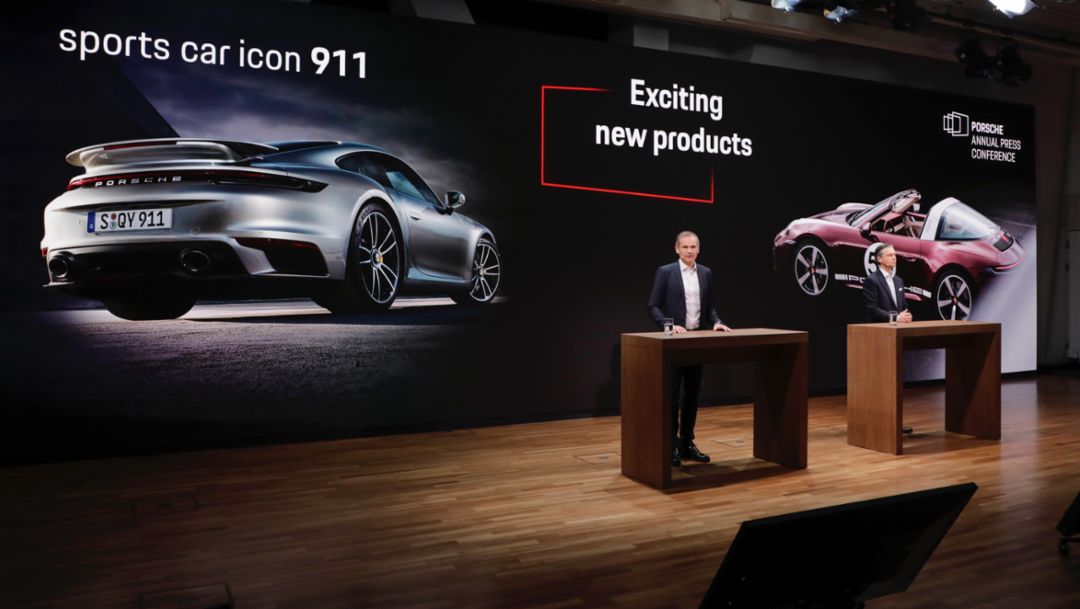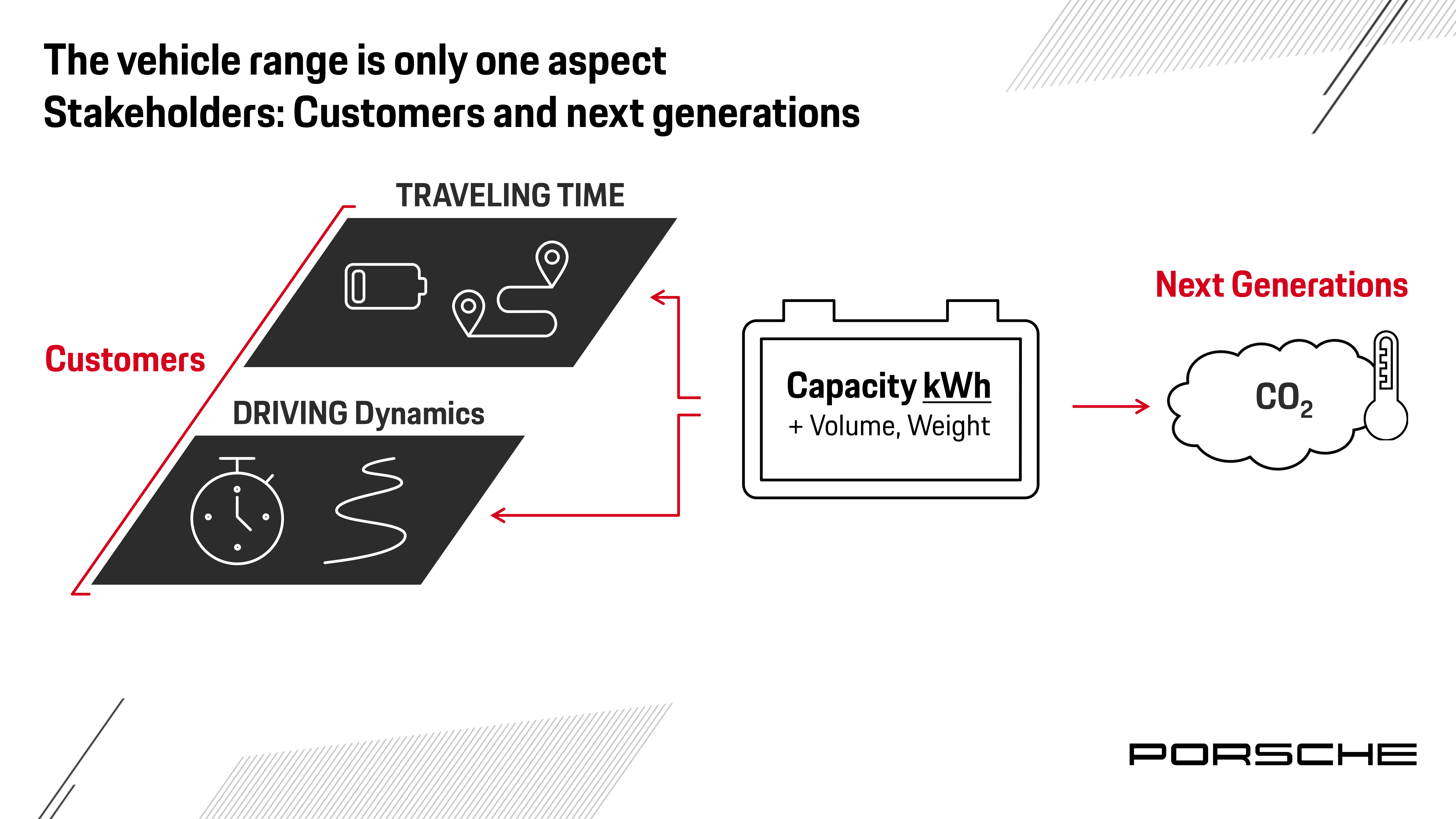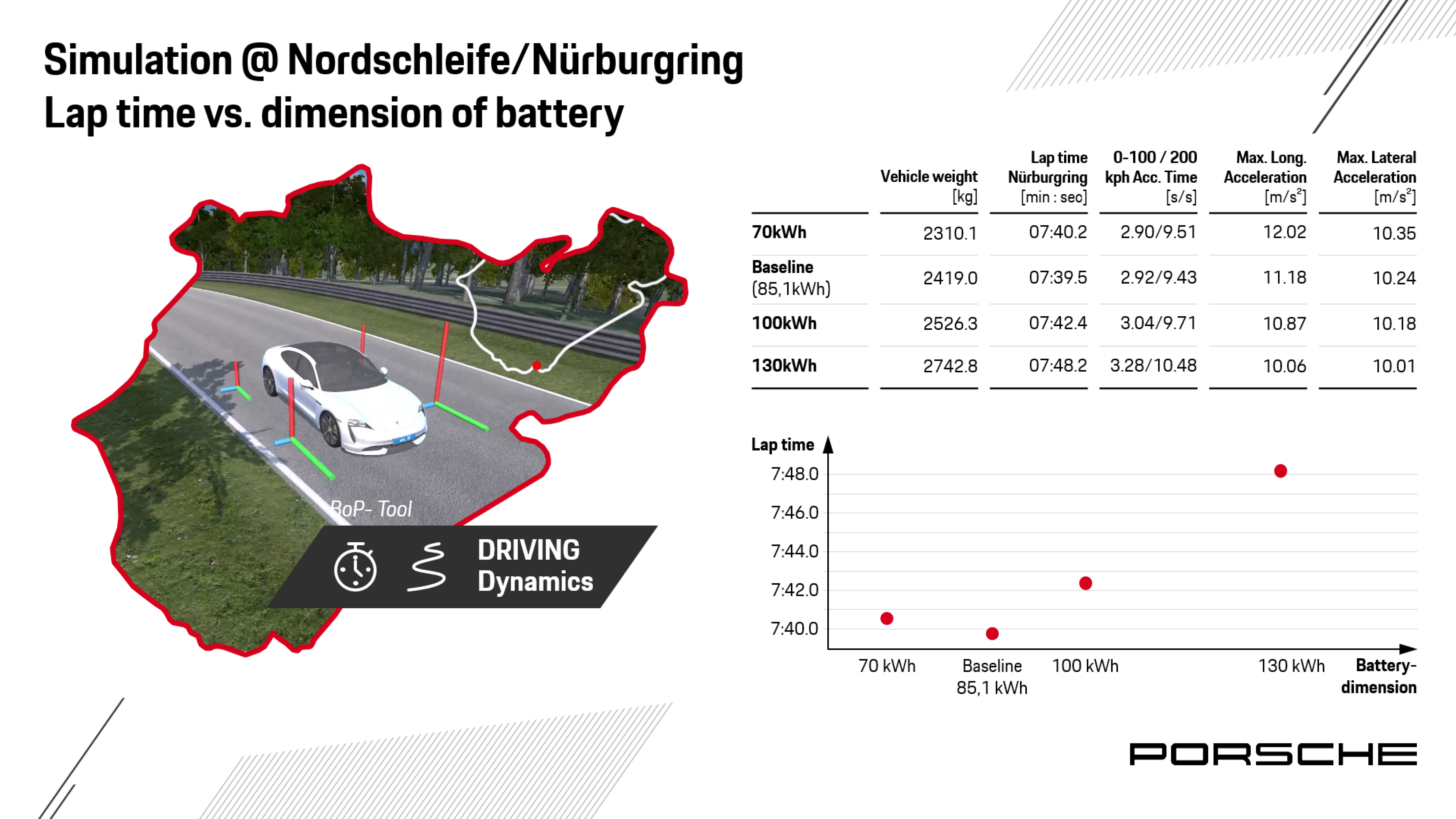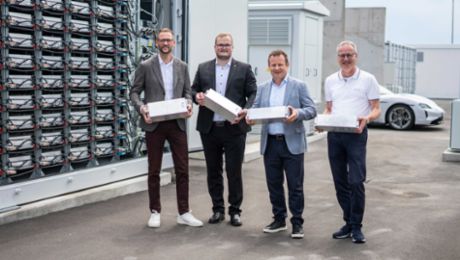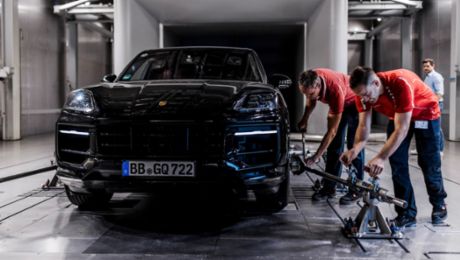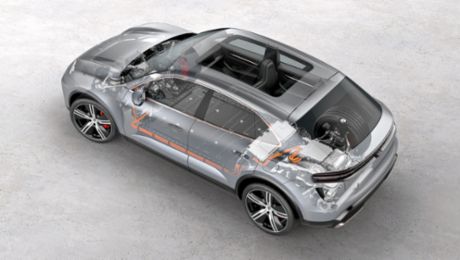Almost half of all the CO2 emissions generated during the lifecycle of an electric vehicle are produced at the manufacturing stage, which includes the extraction and processing of raw materials. The second-largest source of emissions is operation of the vehicle, which is determined by the energy mix used to charge it, charging efficiency, vehicle efficiency and driving style. Recycling procedures and further processing of materials at the end of a vehicle's life cycle generate the lowest proportion of CO2 emissions.
In terms of individual factors, the powertrain battery has the greatest influence on CO2 emissions during a vehicle's lifecycle: the battery accounts for around 40 per cent of the carbon dioxide produced when a single Taycan is manufactured. In other words, the size of the energy carrier is fundamentally responsible for the carbon footprint of an electric vehicle. Yet it is also this component that determines an electric vehicle's success on the market: after all, the size of the battery must be right to ensure that these vehicles meet customers' expectations and requirements.
According to a study conducted by a vehicle manufacturer in the US, worries about being left stranded with an empty battery are the main barrier to customers buying an electric vehicle. An increase in battery capacity and efficiency mean that electric vehicles are evolving to better suit customer requirements. Some manufacturers are now in a position to launch models with a range of well over 600 kilometres, but smaller vehicles for shorter journeys and a smaller operating range are also becoming more popular.
Finding the optimal balance in battery size
Porsche is taking its usual pioneering approach to tackling this challenge. The sports car manufacturer has analysed priorities and use cases to help it identify a battery size that strikes the right balance between what can often be described as conflicting requirements. For example, Porsche customers value a dynamic driving experience but at the same time expect their vehicles to cover long-distances quickly with short charging times. Statistics indicate that the majority of customers drive less than 80 km per day, and approximately 80 per cent of the journeys that take place within a week amount to less than 450 km.
It is generally believed that a large powertrain battery equates to dynamic performance. However, simulated lap times on the Nordschleife track at the Nürburgring suggest otherwise: Porsche has calculated that a virtual Taycan Turbo S featuring a 85.1 kWh battery and weighing 2,419 kilograms can complete a lap in 7:39.5 minutes.
When the battery capacity is reduced to 70 kWh, the total vehicle weight goes down to 2,310 kg. The reduction in battery power means that the Taycan takes an extra seven tenths of a second to complete the lap. The lower vehicle weight makes it possible to accelerate from zero to 100 km/h in 2.90 seconds, which is 0.02 seconds faster than the reference vehicle but with this configuration the Taycan takes 9.51 seconds to reach 200 km/h, which is around eight tenths of a second slower. These calculations indicate that an overall weight saving does not compensate for the reduced power of the battery.
By contrast, a 100-kWh battery adds a very noticeable extra 107 kg to the total vehicle weight. Despite the more powerful battery, the lap time increases to 7:42.4 minutes, accelerating from zero to 100 km/h takes 3.04 seconds and zero to 200 km/h takes 9.71 seconds. The influence of weight becomes even clearer with a 130-kWh battery, which increases the total vehicle weight to 2,743 kg. With this configuration, the lap time increases to 7:48.2 minutes, accelerating from zero to 100 km/h takes 3.28 seconds andzero to 200 km/h takes 10.48 seconds.
800-volt technology and highly efficient DC charging
Porsche's findings indicate that, while a smaller battery is the better option for reducing CO2 emissions during production, a medium-sized battery delivers the best driving dynamics. Large batteries are generally believed to offer a greater range plus shorter journey times. However, thanks to its 800-volt technology and highly efficient direct current charging process, the Taycan takes just five minutes to store enough energy to cover an extra 100 km. Most studies recommend a ratio of two hours of driving to 15 minutes of charging, and the Taycan is already capable of covering long distances when driven in this way.
When looking at how to balance range, performance and sustainability, Porsche has focused on travel time. A battery size in the region of 100 kWh is the best option in this regard. Future battery developments will continue to enhance driving dynamics and charging times, and we can expect even greater progress in terms of reducing CO2 emissions. The second-generation electric vehicles that have not yet been launched will generate around a quarter less carbon dioxide during their lifecycle than the first-generation models, but it is the battery technology itself that will make the largest contribution to reducing a vehicle's carbon footprint: new cell technology will reduce energy consumption, while higher charging capacities will improve efficiency.
New battery technology improves ecological balance
In addition, the expected increase in the proportion of recycled raw materials available from batteries promises a big improvement in sustainability, as well as giving Porsche a real chance of achieving its target by 2030: to have a carbon-neutral balance sheet across the entire value chain.

